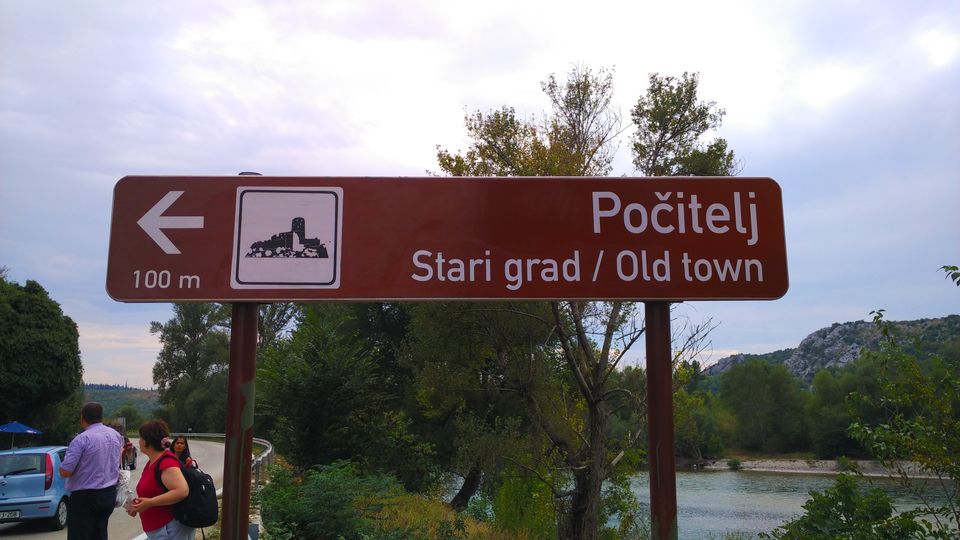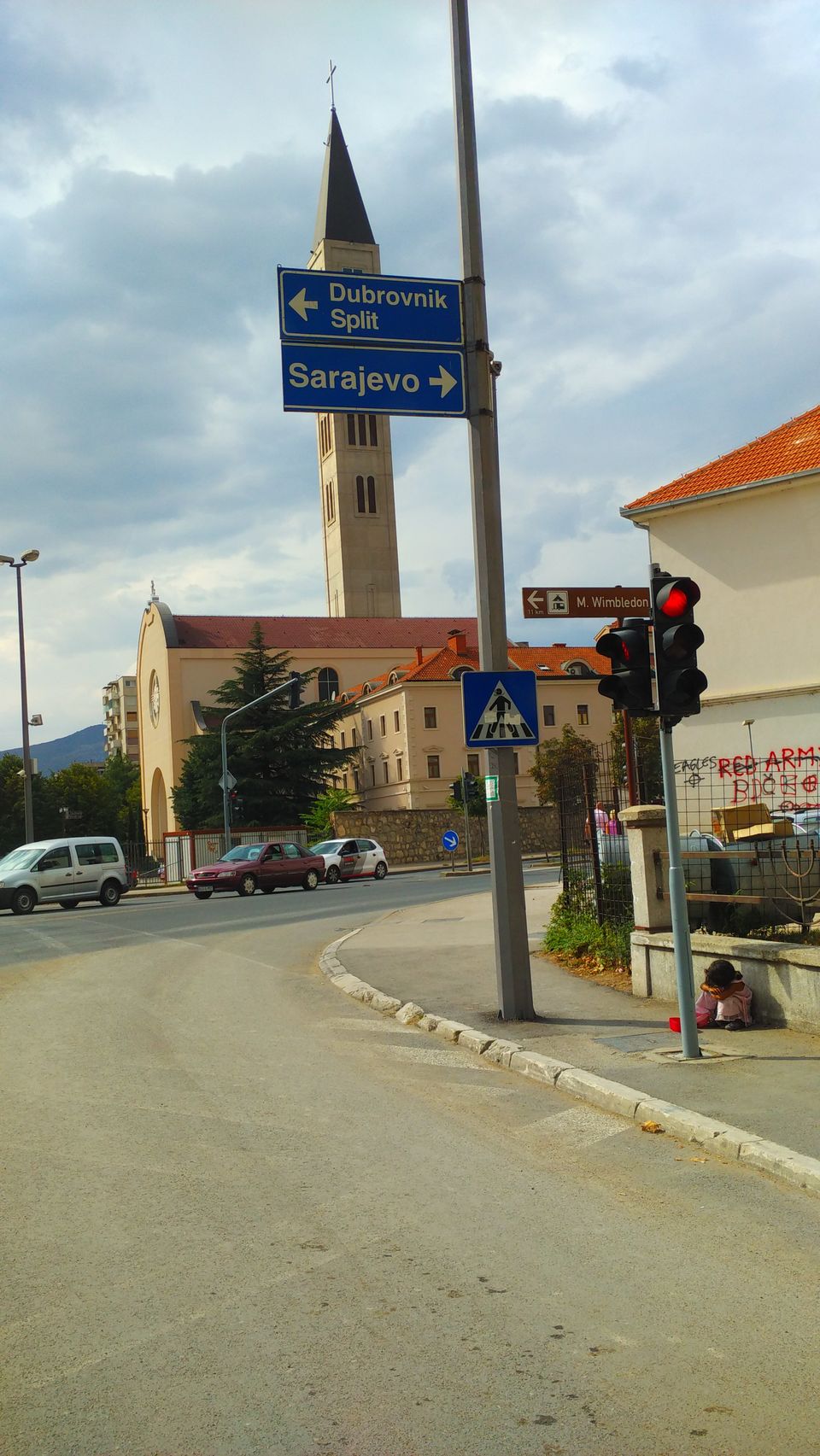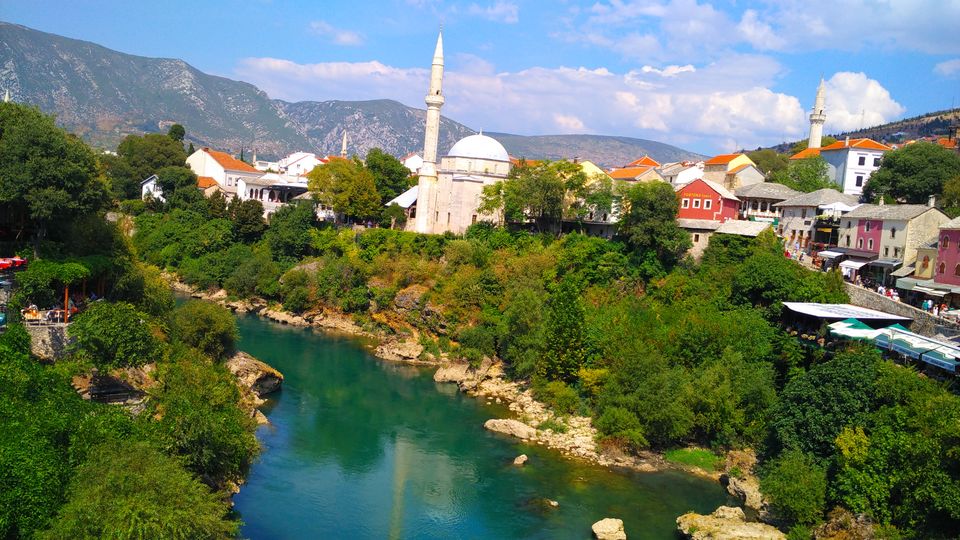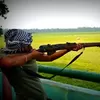
















I was on a half month east European backpacking tour in August 2016 and had already covered the mystical and overwhelmingly historically rich country Greece. I was travelling with my travel buddy Reema and we had backpacked locations like Athens, Meteora and the pristine Greek islands Santorini and Mykonos. Now we were headed to Croatia - a place I had only heard about was because of Goran Ivanišević - the only person to win the men's singles title at Wimbledon as a wildcard.
The second time I heard of it was from my travel mate Reema as she is an avid Game of Thrones fan and Dubrovnik in Croatia is the shoot location of the GOT series. Well the post is neither about Greece nor Croatia it is about this serenely picturesque country – Bosnia and Herzegovina. It happened so that while our time in Dubrovnik both Reema and I had already spent a week together and needed a break from each other. I was no more interested in touring the GOT shoot locations as I had never watched a single episode of the show. So I decided to visit the next bordering country for a day tour, I zeroed on Bosnia and Herzegovina from a choice of Serbia and Montenegro in the Balkan Peninsula.
Having studied about the Yugoslavian war in the 90’s in history classes I very much wanted to witness the war affected country personally. First settled by the Slavic peoples, Bosnia and Herzegovina became a province of the Ottoman Empire in the 14th century. It’s this influence that brought Islam to B&H. They declared sovereignty and independence from the former Yugoslavia in 1991 and 1992. It was so sad to believe that such a visually beautiful country experienced the longest siege in history. Sarajevo was under siege for four years and the effects of that are still visible on the capital city, as well throughout other areas of Bosnia & Herzegovina.
I took a roadtrip with a group of strangers who were from different parts of the World, there was an American born Sikh girl Shagun, a gentleman from Germany, a Turkish couple and some more. Our driver Davo was Croatian and was briefing us every now and then about the war and locations. The most interesting information he shared was that Sarajevo was the birth place of the slain Lybian leader Muamar Gaddafi . He drove us around the University where he had his education.
The drive into Sarajevo from Croatia was as if I had fallen into a painting, traveling along a bright turquoise river, winding through lush green mountains however with a lot of checkpoints. I was the only traveler whose passport would go for thorough checking with the authorities (drawback of having an Indian passport).
Our first stop was Medjugorje in Bosnia, and to my delightful surprise Davo took us to this beautiful church dedicated to Our lady in Medjugorje. Legend goes that two children witnessed an apparition of the Virgin Mary in June 1981 and I was fortunate enough to be there on 8 September the birthday of Mama Mary.
Next we drove to Mostar- to visit the famous UNESCO world heritage site Stari Most bridge a 16th-century Ottoman bridge that crosses the river Neretva and connects the two parts of the city. The Old Bridge stood for 427 years, and even withstood the weight of Nazi tanks, until it was destroyed on 9 November 1993 by Croat forces during the Croat–Bosniak War. Subsequently, a project was set in motion to reconstruct it, and the rebuilt bridge opened on 23 July 2004.One of the country's most recognizable landmarks, it is considered an exemplary piece of Balkan Islamic architecture.
The Stari Most Bridge is a striking single-arch stone bridge with large towers on either side of the bridge, one of which houses a museum. Local young men hang out on the bridge in swimwear waiting for someone to pay them to jump into the chilly Neretva River below. The bridge is also divided into two cultures on either side with one side depicting catholic influence with Croatian flags flowing in the air and as soon as you cross to the other side there is distinct Turkish flavour to the town. It’s like a little taste of Turkey in Bosnia Herzegovina.
Walking through the small old town of Mostar is a culturally interesting visual where the city is at a crossroad of religions, with Muslim Bosniaks (roughly 40% of the population) living in harmony with Catholics and Orthodox Serbs. The Turkish side of the bridge showcases Ottoman influence with the smell of shisha, turkish cafés and alleys of Kujundziluk bazaar selling all kinds of metalwork, arpets and Turkish jewelry. The Croatian side of the bridge has western medieval trademarks like the charming Shire-like houses with wooden balconies, adorned by the round black and white pebbles of the streets and walls. While most of the skyline is dominated by minarets, the tallest structures in town are the new Catholic church and the huge white cross in the hilltop across the river.
The evidence of the war toll thrives until today with crumbling buildings and marks of bullets in buildings one can hardly ignore. One such is the Sniper Tower which was the the frontline of the Bosnian war. This building was used as a base for snipers to take aim at their targets below and is still there, decorated with street art. And nearby are number of cemeteries with death plates of the year 1993/4/5.
The memories of the war are still afresh at every nook and corner of the city, the whole city illuminates the misery suffered by the Bosnian people. I got the feeling Bosnia & Herzegovina has still a lot to do to recover from their violent past. After all, it’s not only the buildings that were destroyed.
On our way back we stopped at the medieval town of Pocitelj, it was the most breathtaking architectural ensembles I came across with few scattered homes and cafes, a beautiful mosque, a tower and a citadel, surrounded by the remains of a city wall.
In 1996, Počitelj was added to the list of the world’s 100 most endangered cultural heritage sites, by the World Monuments Watch after it was completely destroyed to ruins by the Bosnian war.The large 1562 Hadži Alijina Mosque has been fully restored since the 1990s destruction, while the 16m clock tower remains bell-less, as it has been since 1917. It was the first ever Mosque I had entered and surprisingly there was no restrictions on dress code. The mosque was a beautiful piece of history panning the bygones of the Ottomon era. I was taking a walk around the mosque and saw a dead fox hanging in the courtyard of local, terrified by the sight I ran for my life with the owner of the dead fox insisting that I wear the dead fox around me a it was considered a way of keeping warm and stylish in their culture.
The drive back to the Croatian borders was full of etched scenes of Bosnian culture and dead war zones. I considered myself fortunate to have been able to witness this amalgamation of cultures. I bought a pen as a souvenir which was made of the remaining dead bullet used in the war- a significant reminder of how cruel humanity can be. Well the drive faded the painful past of the country and mesmerized me with the maybe still leftover land mined valleys, villages and turquoise water bodies flowing along the highway. This had been the strangest and worthwhile destinations I have ever visited. I pray for peace for this country.I was on a half month east European backpacking tour in August 2016 and had already covered the mystical and overwhelmingly historically rich country Greece. I was travelling with my travel buddy Reema and we had backpacked locations like Athens, Meteora and the pristine Greek islands Santorini and Mykonos. Now we were headed to Croatia - a place I had only heard about was because of Goran Ivanišević - the only person to win the men's singles title at Wimbledon as a wildcard.
The second time I heard of it was from my travel mate Reema as she is an avid Game of Thrones fan and Dubrovnik in Croatia is the shoot location of the GOT series. Well the post is neither about Greece nor Croatia it is about this serenely picturesque country – Bosnia and Herzegovina. It happened so that while our time in Dubrovnik both Reema and I had already spent a week together and needed a break from each other. I was no more interested in touring the GOT shoot locations as I had never watched a single episode of the show. So I decided to visit the next bordering country for a day tour, I zeroed on Bosnia and Herzegovina from a choice of Serbia and Montenegro in the Balkan Peninsula.
Having studied about the Yugoslavian war in the 90’s in history classes I very much wanted to witness the war affected country personally. First settled by the Slavic peoples, Bosnia and Herzegovina became a province of the Ottoman Empire in the 14th century. It’s this influence that brought Islam to B&H. They declared sovereignty and independence from the former Yugoslavia in 1991 and 1992. It was so sad to believe that such a visually beautiful country experienced the longest siege in history. Sarajevo was under siege for four years and the effects of that are still visible on the capital city, as well throughout other areas of Bosnia & Herzegovina.
I took a roadtrip with a group of strangers who were from different parts of the World, there was an American born Sikh girl Shagun, a gentleman from Germany, a Turkish couple and some more. Our driver Davo was Croatian and was briefing us every now and then about the war and locations. The most interesting information he shared was that Sarajevo was the birth place of the slain Lybian leader Muamar Gaddafi . He drove us around the University where he had his education.
The drive into Sarajevo from Croatia was as if I had fallen into a painting, traveling along a bright turquoise river, winding through lush green mountains however with a lot of checkpoints. I was the only traveler whose passport would go for thorough checking with the authorities (drawback of having an Indian passport).
Our first stop was Medjugorje in Bosnia, and to my delightful surprise Davo took us to this beautiful church dedicated to Our lady in Medjugorje. Legend goes that two children witnessed an apparition of the Virgin Mary in June 1981 and I was fortunate enough to be there on 8 September the birthday of Mama Mary.
Next we drove to Mostar- to visit the famous UNESCO world heritage site Stari Most bridge a 16th-century Ottoman bridge that crosses the river Neretva and connects the two parts of the city. The Old Bridge stood for 427 years, and even withstood the weight of Nazi tanks, until it was destroyed on 9 November 1993 by Croat forces during the Croat–Bosniak War. Subsequently, a project was set in motion to reconstruct it, and the rebuilt bridge opened on 23 July 2004.One of the country's most recognizable landmarks, it is considered an exemplary piece of Balkan Islamic architecture.
The Stari Most Bridge is a striking single-arch stone bridge with large towers on either side of the bridge, one of which houses a museum. Local young men hang out on the bridge in swimwear waiting for someone to pay them to jump into the chilly Neretva River below. The bridge is also divided into two cultures on either side with one side depicting catholic influence with Croatian flags flowing in the air and as soon as you cross to the other side there is distinct Turkish flavour to the town. It’s like a little taste of Turkey in Bosnia Herzegovina.
Walking through the small old town of Mostar is a culturally interesting visual where the city is at a crossroad of religions, with Muslim Bosniaks (roughly 40% of the population) living in harmony with Catholics and Orthodox Serbs. The Turkish side of the bridge showcases Ottoman influence with the smell of shisha, turkish cafés and alleys of Kujundziluk bazaar selling all kinds of metalwork, arpets and Turkish jewelry. The Croatian side of the bridge has western medieval trademarks like the charming Shire-like houses with wooden balconies, adorned by the round black and white pebbles of the streets and walls. While most of the skyline is dominated by minarets, the tallest structures in town are the new Catholic church and the huge white cross in the hilltop across the river.
The evidence of the war toll thrives until today with crumbling buildings and marks of bullets in buildings one can hardly ignore. One such is the Sniper Tower which was the the frontline of the Bosnian war. This building was used as a base for snipers to take aim at their targets below and is still there, decorated with street art. And nearby are number of cemeteries with death plates of the year 1993/4/5.
The memories of the war are still afresh at every nook and corner of the city, the whole city illuminates the misery suffered by the Bosnian people. I got the feeling Bosnia & Herzegovina has still a lot to do to recover from their violent past. After all, it’s not only the buildings that were destroyed.
On our way back we stopped at the medieval town of Pocitelj, it was the most breathtaking architectural ensembles I came across with few scattered homes and cafes, a beautiful mosque, a tower and a citadel, surrounded by the remains of a city wall.
In 1996, Počitelj was added to the list of the world’s 100 most endangered cultural heritage sites, by the World Monuments Watch after it was completely destroyed to ruins by the Bosnian war.The large 1562 Hadži Alijina Mosque has been fully restored since the 1990s destruction, while the 16m clock tower remains bell-less, as it has been since 1917. It was the first ever Mosque I had entered and surprisingly there was no restrictions on dress code. The mosque was a beautiful piece of history panning the bygones of the Ottomon era. I was taking a walk around the mosque and saw a dead fox hanging in the courtyard of local, terrified by the sight I ran for my life with the owner of the dead fox insisting that I wear the dead fox around me a it was considered a way of keeping warm and stylish in their culture.
The drive back to the Croatian borders was full of etched scenes of Bosnian culture and dead war zones. I considered myself fortunate to have been able to witness this amalgamation of cultures. I bought a pen as a souvenir which was made of the remaining dead bullet used in the war- a significant reminder of how cruel humanity can be. Well the drive faded the painful past of the country and mesmerized me with the maybe still leftover land mined valleys, villages and turquoise water bodies flowing along the highway. This had been the strangest and worthwhile destinations I have ever visited. I pray for peace for this country.

I was on a half month east European backpacking tour in August 2016 and had already covered the mystical and overwhelmingly historically rich country Greece. I was travelling with my travel buddy Reema and we had backpacked locations like Athens, Meteora and the pristine Greek islands Santorini and Mykonos. Now we were headed to Croatia - a place I had only heard about was because of Goran Ivanišević - the only person to win the men's singles title at Wimbledon as a wildcard.
The second time I heard of it was from my travel mate Reema as she is an avid Game of Thrones fan and Dubrovnik in Croatia is the shoot location of the GOT series. Well the post is neither about Greece nor Croatia it is about this serenely picturesque country – Bosnia and Herzegovina. It happened so that while our time in Dubrovnik both Reema and I had already spent a week together and needed a break from each other. I was no more interested in touring the GOT shoot locations as I had never watched a single episode of the show. So I decided to visit the next bordering country for a day tour, I zeroed on Bosnia and Herzegovina from a choice of Serbia and Montenegro in the Balkan Peninsula.
Having studied about the Yugoslavian war in the 90’s in history classes I very much wanted to witness the war affected country personally. First settled by the Slavic peoples, Bosnia and Herzegovina became a province of the Ottoman Empire in the 14th century. It’s this influence that brought Islam to B&H. They declared sovereignty and independence from the former Yugoslavia in 1991 and 1992. It was so sad to believe that such a visually beautiful country experienced the longest siege in history. Sarajevo was under siege for four years and the effects of that are still visible on the capital city, as well throughout other areas of Bosnia & Herzegovina.
I took a roadtrip with a group of strangers who were from different parts of the World, there was an American born Sikh girl Shagun, a gentleman from Germany, a Turkish couple and some more. Our driver Davo was Croatian and was briefing us every now and then about the war and locations. The most interesting information he shared was that Sarajevo was the birth place of the slain Lybian leader Muamar Gaddafi . He drove us around the University where he had his education.
The drive into Sarajevo from Croatia was as if I had fallen into a painting, traveling along a bright turquoise river, winding through lush green mountains however with a lot of checkpoints. I was the only traveler whose passport would go for thorough checking with the authorities (drawback of having an Indian passport).
Our first stop was Medjugorje in Bosnia, and to my delightful surprise Davo took us to this beautiful church dedicated to Our lady in Medjugorje. Legend goes that two children witnessed an apparition of the Virgin Mary in June 1981 and I was fortunate enough to be there on 8 September the birthday of Mama Mary.
Next we drove to Mostar- to visit the famous UNESCO world heritage site Stari Most bridge a 16th-century Ottoman bridge that crosses the river Neretva and connects the two parts of the city. The Old Bridge stood for 427 years, and even withstood the weight of Nazi tanks, until it was destroyed on 9 November 1993 by Croat forces during the Croat–Bosniak War. Subsequently, a project was set in motion to reconstruct it, and the rebuilt bridge opened on 23 July 2004.One of the country's most recognizable landmarks, it is considered an exemplary piece of Balkan Islamic architecture.
The Stari Most Bridge is a striking single-arch stone bridge with large towers on either side of the bridge, one of which houses a museum. Local young men hang out on the bridge in swimwear waiting for someone to pay them to jump into the chilly Neretva River below. The bridge is also divided into two cultures on either side with one side depicting catholic influence with Croatian flags flowing in the air and as soon as you cross to the other side there is distinct Turkish flavour to the town. It’s like a little taste of Turkey in Bosnia Herzegovina.
Walking through the small old town of Mostar is a culturally interesting visual where the city is at a crossroad of religions, with Muslim Bosniaks (roughly 40% of the population) living in harmony with Catholics and Orthodox Serbs. The Turkish side of the bridge showcases Ottoman influence with the smell of shisha, turkish cafés and alleys of Kujundziluk bazaar selling all kinds of metalwork, arpets and Turkish jewelry. The Croatian side of the bridge has western medieval trademarks like the charming Shire-like houses with wooden balconies, adorned by the round black and white pebbles of the streets and walls. While most of the skyline is dominated by minarets, the tallest structures in town are the new Catholic church and the huge white cross in the hilltop across the river.
The evidence of the war toll thrives until today with crumbling buildings and marks of bullets in buildings one can hardly ignore. One such is the Sniper Tower which was the the frontline of the Bosnian war. This building was used as a base for snipers to take aim at their targets below and is still there, decorated with street art. And nearby are number of cemeteries with death plates of the year 1993/4/5.
The memories of the war are still afresh at every nook and corner of the city, the whole city illuminates the misery suffered by the Bosnian people. I got the feeling Bosnia & Herzegovina has still a lot to do to recover from their violent past. After all, it’s not only the buildings that were destroyed.
On our way back we stopped at the medieval town of Pocitelj, it was the most breathtaking architectural ensembles I came across with few scattered homes and cafes, a beautiful mosque, a tower and a citadel, surrounded by the remains of a city wall.
In 1996, Počitelj was added to the list of the world’s 100 most endangered cultural heritage sites, by the World Monuments Watch after it was completely destroyed to ruins by the Bosnian war.The large 1562 Hadži Alijina Mosque has been fully restored since the 1990s destruction, while the 16m clock tower remains bell-less, as it has been since 1917. It was the first ever Mosque I had entered and surprisingly there was no restrictions on dress code. The mosque was a beautiful piece of history panning the bygones of the Ottomon era. I was taking a walk around the mosque and saw a dead fox hanging in the courtyard of local, terrified by the sight I ran for my life with the owner of the dead fox insisting that I wear the dead fox around me a it was considered a way of keeping warm and stylish in their culture.
The drive back to the Croatian borders was full of etched scenes of Bosnian culture and dead war zones. I considered myself fortunate to have been able to witness this amalgamation of cultures. I bought a pen as a souvenir which was made of the remaining dead bullet used in the war- a significant reminder of how cruel humanity can be. Well the drive faded the painful past of the country and mesmerized me with the maybe still leftover land mined valleys, villages and turquoise water bodies flowing along the highway. This had been the strangest and worthwhile destinations I have ever visited. I pray for peace for this country.

